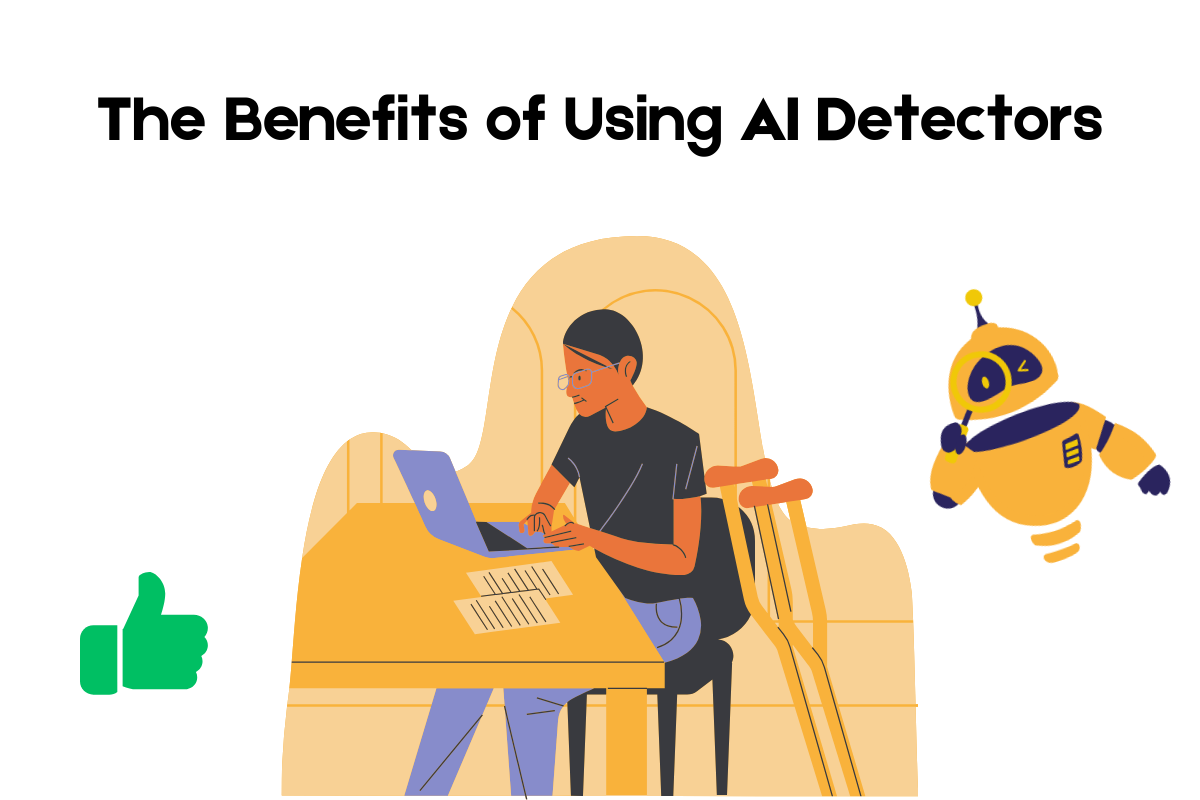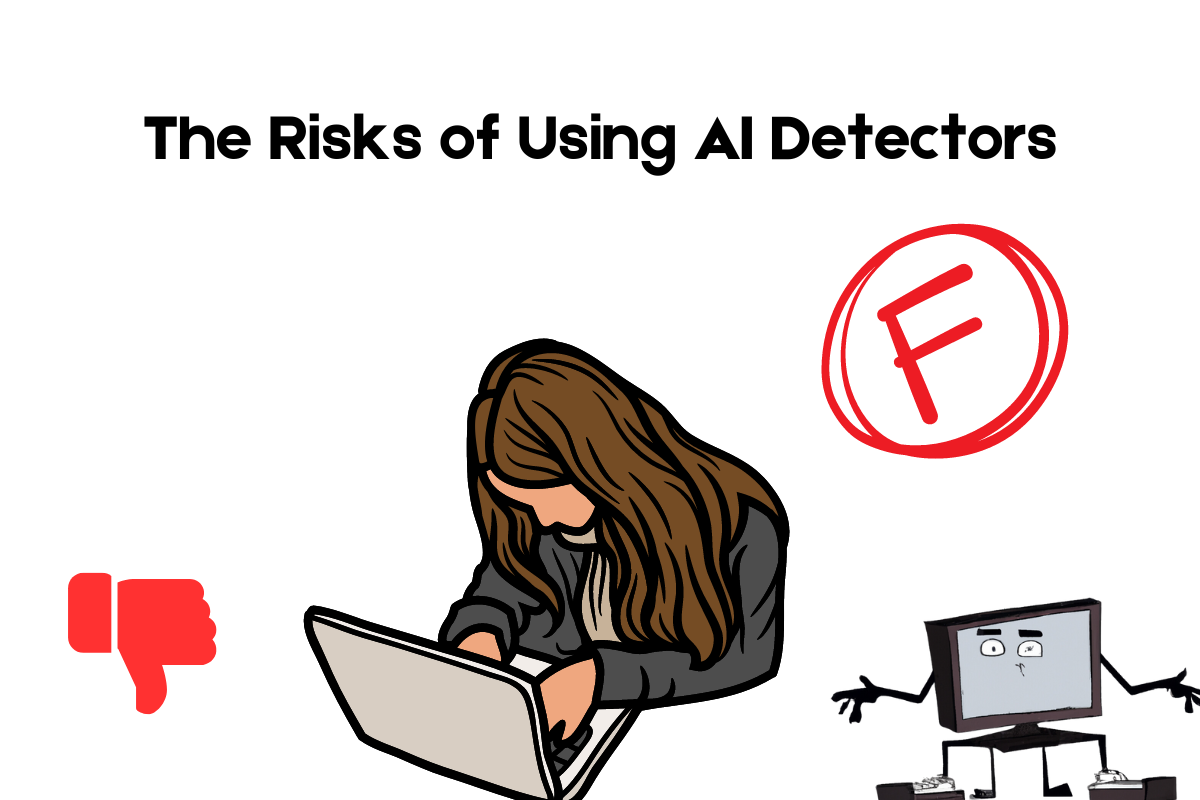Should Writers Use AI Detectors?
AI text detectors are gaining popularity in schools and editorial work environments, but should writers be using them or not?
The decision on whether writers should use AI detectors involves weighing the benefits and limitations of these tools.
AI detectors can be helpful in specific contexts but also present significant challenges and limitations that writers should consider.
In this instance, we are talking about AI text detectors designed to check if a piece of text is AI-generated. The problem is that they aren’t always 100% accurate.
Pros of Using AI Detectors
Detection of AI-Generated Content
AI detectors like Undetectable AI can help identify content that AI tools may have generated. This is particularly useful in maintaining academic integrity and ensuring the authenticity of written work.
For example, universities can use AI detectors to ensure students submit original work, thus upholding academic standards.
According to a report released by Turnitin.com in March 2024, over 22 million students allegedly used AI in their essays and homework assignments. When institutions use these tools, they may also consider whether they need to fix my speaker to ensure clarity during presentations or video submissions.
Support for Educators and Publishers
For educators, AI detectors serve as a tool to check whether students are submitting original work.
Publishers might use AI detection tools to ensure that the content they publish is not AI-generated, maintaining a certain standard of content authenticity. This is also important in fields like journalism, where the credibility of information is paramount.
Prevention of Misinformation
In the context of moderating content on platforms, AI detectors can help identify and reduce the spread of AI-generated fake news or misinformation. Detectors could contribute to a more trustworthy online environment, which is becoming more of a concern among users worldwide.
Limitations and Challenges
Accuracy Concerns
AI detectors often struggle with accuracy. For instance, according to Scribbr.co.uk, they have been found to have an average accuracy of around 60%, with the best tools reaching up to 84% under specific conditions.
This variability can lead to false positives—where original human-written content is misidentified as AI-generated—and false negatives, where AI-generated content is not detected. This is problematic in academic and professional settings where accuracy is critical.
Bias Against Non-Native English Speakers
Studies have shown that AI detectors can be biased against writings by non-native English speakers, often misclassifying their work as AI-generated. This can lead to unfair penalization or scrutiny in academic and professional settings.
For example, a non-native English speaker might be unfairly accused of using AI tools, which could affect their credibility and opportunities.
Evolving AI Capabilities
As AI writing tools evolve, they become more sophisticated in mimicking human writing styles, making it increasingly difficult for detectors to identify AI-generated content accurately.
This ongoing “arms race” means that detectors must continuously update to keep pace with AI writing tools, which can be a resource-intensive process. It’s like a game of hide-and-seek, where the stakes are high, and the rules keep changing.
Ethical and Practical Implications
Relying solely on AI detectors can lead to ethical issues, such as unwarranted accusations of dishonesty or plagiarism.
Further, the practical implementation of these tools is challenging due to the need for constant updates and the potential for errors.
For instance, a student might be wrongly accused of cheating, causing unnecessary stress and potential damage to their academic record.
In fact, on April 12, 2024, USAtoday.com reported that AI detection tools falsely accused William Quarterman, a student at the University of Davis.
The bottom line is that people should use AI detection tools carefully.
Recommendations for Writers
Given these considerations, writers should use AI detectors cautiously and as part of a broader strategy that includes manual review and other forms of verification.
Supplemental Use
AI detectors should not be the sole method for determining the authenticity of content. They are best used as a preliminary tool to flag potential AI-generated content for further review. Think of them as a first line of defense, not the final judge.
Contextual Application
Writers should consider the specific needs and contexts of their work. For example, combining AI detectors with traditional plagiarism checkers and manual reviews might be more effective in academic settings.
This multi-layered approach can help ensure a more accurate and fair content assessment.
Awareness of Limitations
Writers must understand the limitations of AI detectors, including their accuracy rates and potential biases. This awareness can prevent undue reliance on these tools and encourage a more nuanced approach to their use. Being informed about these limitations can help writers decide when and how to use AI detectors.
Ethical Considerations
Writers should consider the ethical implications of using AI detectors, especially regarding privacy, data security, and the potential for false accusations.
For instance, relying too heavily on AI detectors can lead to privacy concerns, as these tools often require access to large amounts of data to function effectively.
What Is The Best AI Detector to Use?
One tool called Undetectable.ai offers an AI text detector and checker that is completely free to use. The Undetectable.ai detector doesn’t just grade text with one detection model, instead, it lets you see how multiple detection models grade your text.
Another AI detector worth checking out is GPTzero, however, it is limited in its free use, and only checks with one model.
What AI Detectors to Avoid?
Some AI detectors like Originality charge $20 a month to use. Originality reportedly has a high false positive rate, and low AI detection accuracy.
Another AI detector writers and teachers should avoid is Turnitin, as there are numerous complaints and news reports about students being falsely accused.
Conclusion
While AI detectors offer certain benefits, their current limitations mean they should be used cautiously and in conjunction with other verification methods to ensure fairness and accuracy in content authentication.
Keep in mind that there are ways to detect AI-generated content without using tools.
By understanding these tools’ strengths and weaknesses, writers can make better decisions about their use and enhance the integrity and credibility of their work.
By taking a careful approach, writers can leverage the benefits of AI detectors while mitigating their drawbacks, ensuring that their work remains authentic and credible.



Leave a Reply